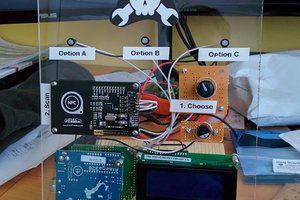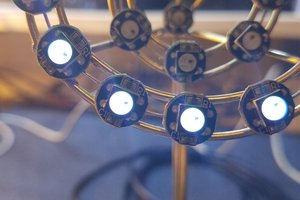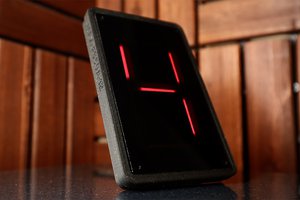It shows up as a mountable drive, you can live-edit the code.py file so when you save, the new code is automatically loaded. No compiling.
Similar to other computer mice, keyboards, or other peripherals it's powered by USB so it does not run standalone.
The Woodworking began as a solid block of South American Tigerwood. Nice pattern and hardness but I can't say I enjoy the smell of this wood. It's got a gluey stank which is not particularly enjoyable.
I used a bandsaw to take a 1/4 inch veneer off the top. This will be the cover.
The bottom base was hollowed out using a plunge router. A device you must respect. It can clear out a lot of material quickly but at 10k to 30k RPMs it can easily get away from you in a hurry. Safety always first.
The two two pieces were then carved and fitted to accept the Macropad. It's a bit of a shame to seal up the beautiful silkscreen art of this particular PCB.
The fitted Macropad had one other addition. I used a cut down credit card sized plastic magnifying glass using lenticular? magnification. The offset from the OLED gives the display a slight floating feeling.
Macrophotograpy of the Macropad
The project was finished with a couple coats of MInwax Tung Oil finish. Not a "true" tung oil but it makes the grain pop while not filling the wood pores.
The seams are a little more visible than I would like. From a distance however it's not that noticeable. I've learned that minimal handling is required after separating using the "bandsaw box" technique to prevent "dings".
As for programming I'm mainly using the application hotkeys demo found on the Adafruit Learning Guide but the sky is the limit because it can be programmed to do anything a keyboard or mouse can do.
Motivation to write this up comes from the recent Hackaday.io contest for Odd inputs and peculiar peripherals.
 Andrew Smith
Andrew Smith
 Mike Szczys
Mike Szczys
 EEDad
EEDad
 Madison
Madison
 Ethan Durrant
Ethan Durrant